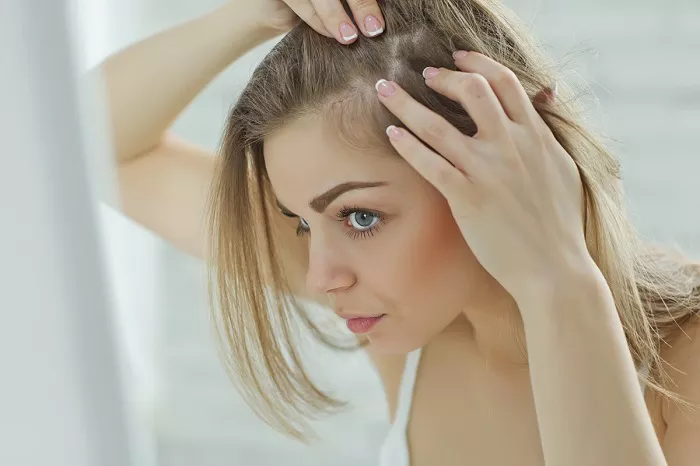Hair loss can be a troubling experience, whether you’re seeing strands collecting in the shower drain or noticing a more noticeable part when styling your hair. While some shedding is normal, excessive hair loss can be a sign of an underlying issue.
Normal Hair Loss vs. Excessive Shedding
According to Dr. Mona Gohara, a board-certified dermatologist and associate professor at Yale School of Medicine, it’s typical for the hair cycle to consist of 90% of hair in the growth phase and about 10% in the shedding phase. On average, losing 50 to 100 hairs a day is considered normal. However, when the shedding exceeds this threshold, it may be a sign of abnormal hair loss.
See Your Doctor Early
If you notice an unusual amount of hair loss, your first step should be to consult a doctor. Lab tests can help identify potential metabolic issues such as vitamin deficiencies, thyroid problems, or autoimmune conditions. Hormonal changes, particularly during perimenopause and menopause, can also contribute to hair thinning. Dr. Jessica Shepherd, a gynecologist and menopause expert, explains that a decrease in estrogen and progesterone levels during menopause can affect hair growth, leading to noticeable volume loss.
Once medical causes are ruled out, the next step is to consider lifestyle factors that may be affecting your hair health.
1. How Stress Affects Hair Loss
Stress is one of the most common contributors to excessive hair shedding. Both physiological stress, such as recovering from surgery or anesthesia, and emotional stress, like the loss of a loved one, can disrupt the normal hair cycle. According to Dr. Gohara, stress can push hair into the shedding phase more quickly than it should.
Solution: To address stress-induced hair loss, finding ways to manage stress through relaxation techniques or exercise can help restore balance. Most stress-related hair shedding will resolve within months, but if you don’t notice improvement, consulting a healthcare provider is advised.
2. Haircare Practices That Could Be Worsening the Problem
The way you handle your hair daily can have a significant impact on its health. Tight hairstyles, like ponytails and braids, as well as excessive use of heat styling tools, can damage hair follicles and lead to breakage or a condition called traction alopecia. Harsh chemical treatments, including dyes and relaxers, can also weaken strands over time.
Solution: Dr. Gohara recommends avoiding tight hairstyles and minimizing the use of chemical treatments. Opt for looser hairstyles, and consider reducing heat styling, using lower settings, and applying a heat protectant when you do. Additionally, using sulfate-free and alcohol-free products can help maintain scalp health and prevent hair breakage.
3. The Role of Diet in Hair Loss
A poor diet or drastic changes in eating habits can also contribute to hair loss. Deficiencies in key nutrients, such as vitamin D, iron, folate, and vitamin B12, are common causes of excessive shedding. Dr. Gohara notes that drastic weight loss or restrictive diets can trigger telogen effluvium, a condition where hair shedding accelerates faster than growth.
Solution: Ensuring a balanced diet is crucial for healthy hair growth. Dr. Gohara recommends eating a variety of foods rich in omega-3s, biotin, and vitamins C and E to promote healthy hair. A doctor can perform blood tests to identify nutrient deficiencies and provide targeted advice.
Minoxidil: A Popular Treatment for Hair Loss
If lifestyle adjustments and natural remedies don’t address your hair loss, you might want to explore hair regrowth treatments like minoxidil. This topical medication is widely used to treat hair loss and can be effective in stimulating hair growth. Here’s what you should know:
Topical vs. Oral Minoxidil: Topical minoxidil is an easy-to-use, over-the-counter solution that works for many people. Oral minoxidil is more potent and may be a better option for those who need more significant intervention.
Proper Application: Apply minoxidil only to the affected areas of your scalp. Overuse can cause unwanted side effects, including hair growth in areas where you don’t want it, such as your forehead or face. Be sure to follow instructions carefully to avoid complications.
Consistency Is Key: Minoxidil works by extending the hair’s growth phase. However, if you stop using it, any hair regrowth may fall out. If your hair loss is genetic, continuing treatment will likely be necessary to maintain the results.
If you’re experiencing hair loss, it’s essential to consider the role that lifestyle factors, like stress, haircare practices, and diet, might play. For those struggling with persistent shedding, a consultation with a healthcare provider or a hair transplant specialist may offer further insight into treatments, including hair transplant surgery, to restore hair density and boost confidence.
Related Topics:
- How Much Does Hair Tattoo Cost? A Comprehensive Guide
- Gwyneth Paltrow’s Hair Loss Journey and Treatments
- Hair Transplant Safety Tips: What to Check Before Surgery


